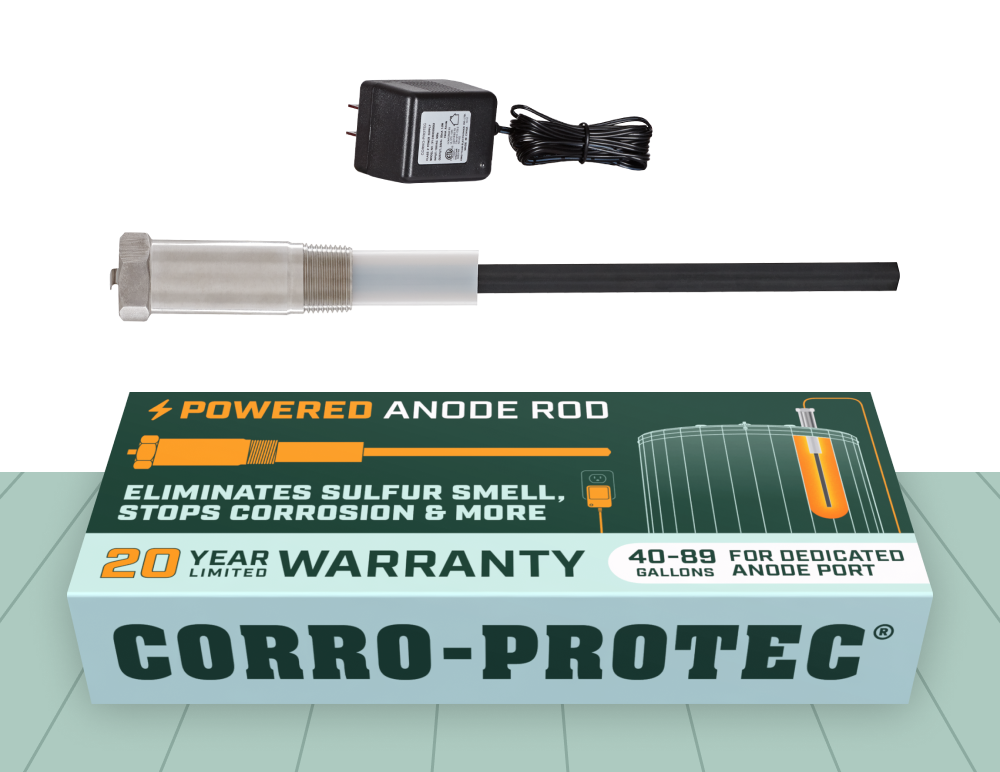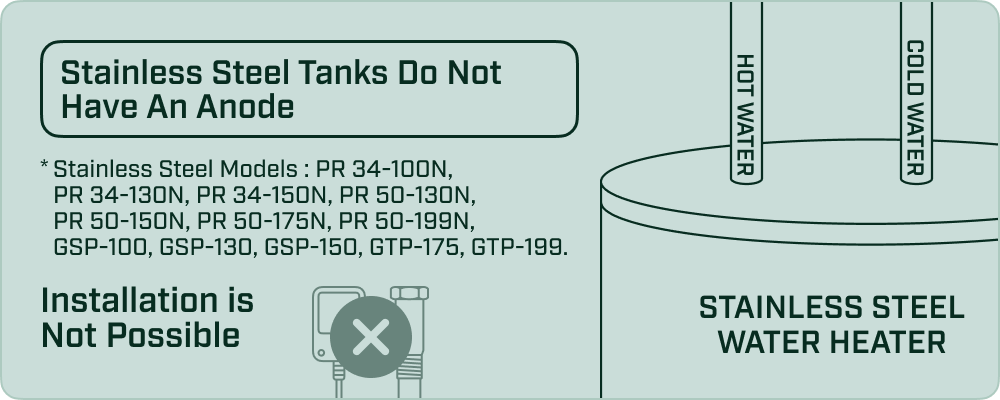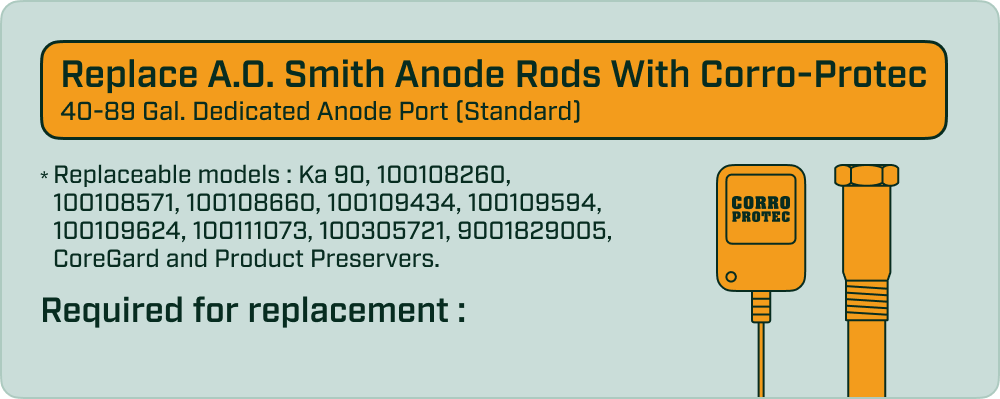A.O. Smith Water Heater Anode Rod: Location and Replacement Guide
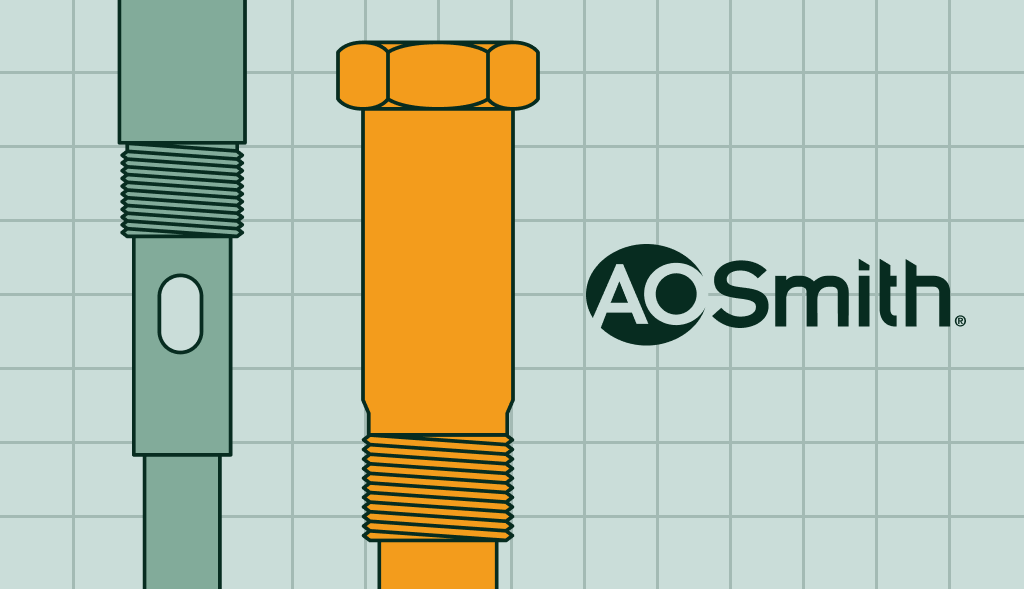
The anode rod protects your A.O. Smith* water heater from corrosion. Typically found on top under a plastic cap, it can be removed with a socket wrench by turning it counterclockwise, with a pipe wrench or impact wrench as a backup if needed. Understanding where the anode rod is located and how to replace it is essential for maintaining the longevity and efficiency of your A.O. Smith water heater.
What is an Anode Rod and Why is it Important?
The anode rod in your A.O. Smith water heater is not just a component, it’s a crucial protector that shields the tank from corrosion. This sacrificial anod rod, typically made of magnesium, aluminum, or zinc, attracts corrosive elements in the water and prevents them from damaging the tank’s lining. Over time, the anode rod depletes, and replacing it ensures the water heater remains in good condition.
Typically found on top under a plastic cap, it can be removed with a socket wrench by turning it counterclockwise, with a pipe wrench as a backup if needed. Understanding where the anode rod is located and how to replace it is essential for maintaining the longevity and efficiency of your A.O. Smith water heater.
Types of Anode Rods for A.O. Smith Water Heaters
Powered Anode Rods
Powered anode rods are an advanced alternative to traditional sacrificial anode rods. They utilize electrical current to prevent corrosion in the water heater tank. These rods do not deplete over time, offering a long-lasting solution for tank protection. Key benefits of powered anode rods include:
- Enhanced Corrosion Protection: Provides consistent and reliable defense against corrosion, regardless of water quality.
- Longer Lifespan: Unlike traditional anode rods, powered anodes do not require periodic replacement.
- Reduced Maintenance: Eliminates the need for frequent inspections and replacements.
- Improved Water Quality: This technology minimizes the release of particles into the water, which can occur with traditional anode rods.
- Stops Sulfur Smell: Kills the SRB bacteria
Learn more about the benefits of powered anode rods and purchase one here.
Magnesium Anode Rods
Magnesium anode rods offer excellent corrosion protection due to their high reactivity. They are ideal for soft water conditions but tend to degrade faster in hard water. While highly effective, they may contribute to a sulfur-like odor in the water.
Aluminum Anode Rods
Aluminum anode rods are a more durable, particularly in hard water areas. They have a longer lifespan but provide slightly less corrosion protection compared to magnesium rods. Additionally, their heavier composition can lead to sediment buildup inside the water heater over time.
| Powered Anode Rod | Magnesium Anode Rod | Aluminum Anode Rod(Zn-Alloy) | |
|---|---|---|---|
| Type | Titanium (Impressed-Current) | Sacrificial | Sacrificial |
| Typical Lifespan* | 25+ yrs | 1 to 3-5 yrs | 2 to 4-6 yrs |
| Lifetime Cost* | $159.99 | $199.99 to $999.99 | $209.99 to $599.99 |
| Typical Price* | $159.99 | $39.99 | $49.99 |
| Energy savings | Reduces energy bills by $40/year by preventing sediment buildup | Increase energy use due to sediment buildup | Increase energy use due to sediment buildup |
| Anode Rod Replacement |
Never |
Frequently |
Frenquently |
| Corrosion Protection |
Stops corrosion |
Failing to replace the anode rod before it’s depleted means water heater corrosion/failure will resume; regular inspection is key |
Lose their effectiveness over time. To ensure continued protection against corrosion, timely replacement is essential |
| Sulfur smell elimination | Eliminates & Prevents sulfur smell in hot water within 24 hours, no matter the cause | Can react with certain water types, producing an unpleasant sulfur smell in hot water | Can help reduce sulfur smell in hot water |
| Sediment Build-Up | Reduces sediment accumulation | Can cause sediment buildup in the tank when the anode is deteriorated | Can cause sediment buildup in the tank when the anode is deteriorated |
| Water Quality | Best for any water chemistry (soft or hard water) | Good for any water chemistry but will deteriorate more quickly in hard water | Good for any water chemistry but will deteriorate more quickly in hard water |
| Inspect | No anode rod inspection |
Hard/Well water: yearly Soft city water: every 2 yrs |
Hard/Well water: yearly Soft city water: every 2 yrs |
| Replace | No anode replacement. Controller sounds/LED alerts after ~20 yrs |
Anode rod replacement Hard/Well water: 2 to 3 yrs Soft city water: ~5 yrs |
Anode rod replacement Hard/Well water: 4 to 6 yrs Soft city water: ~5 yrs |
| Odor Notes | Ends odor completely in less than 24 hours | Can cause sulfur smell over time | Helps reduce smell, not always fully |
Learn How to Replace the Anode Rod on an A. O. Smith Water Heater
The anode rod in A.O. Smith water heaters is typically positioned at the top of the tank. It is often hidden under a plastic cap or cover for protection (there may also be a layer of insulation under the cap that needs to be removed). However, many A.O. Smith tank models exist, so we understand that locating the anode rod can be confusing.
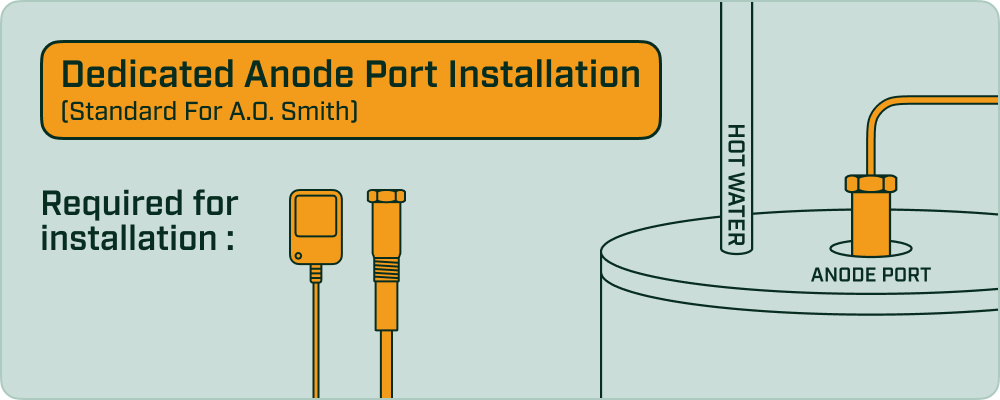
97% of the A.O. Smith Water Heater models has the anode rod in a dedicated anode port (standard). If you are considering upgrading to a powered anode rod here is the option that supports this installation.
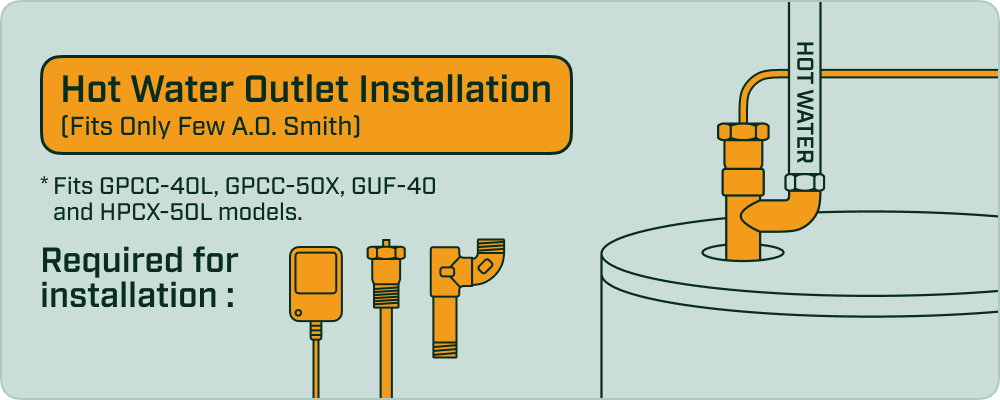
Only 4 A.O. Smith models has the anode rod in the hot water outlet. If you are considering upgrading to a powered anode rod here is the option that supports this installation.
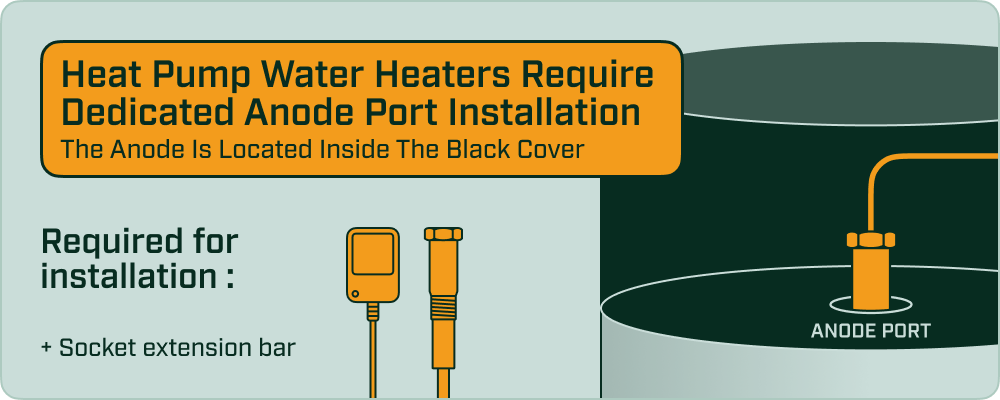
The A.O. Smith Heat Pump Model requires you to remove a cap on top of the tank. If you are considering upgrading to a powered anode rod here is the option that supports this installation.
If you enjoy doing repairs yourself and want to replace your anode, you can follow the installation instructions to replace it.
AO Smith Anode Rods Replacement
AO Smith manufactures their own series of anode rods. These rods, like the Coregard anode rod and AO Smith Signature anode rods, are standard aluminum or magnesium anode rods and help protect your water heater from corrosion.
The AO Smith anode rod serial numbers in the following list can be replaced by a Corro-Protec 40-89 Gal. dedicated anode port (standard) powered anode rod. If upgrading to a powered anode rod is not an option for you right now, and you’re only looking for replacement parts, here is a list of AO Smith anode rod serial numbers to help you in your search :
AO Smith Most Common Water Heater Models That Are Compatible With the Corro-Protec Anode Rod Replacement
- ECT-52 200 (Series Discontinued: ProMax® 50-Gallon Electric Water Heater)
- ECT-52 210 (Series Discontinued: ProMax® 50-Gallon Electric Water Heater)
- ENT-50 110 (Series Discontinued: ProLine® 50-Gallon Short Electric Water Heater)
- GCV-50 300 ( Series Discontinued: ProMax® 50-Gallon Gas Water Heater)
- GCG 50 400 (Proline 50-Gallon Atmospheric Vent Gas Water Heater)
- Signature 100 ( 40 Gallon electric model)
- Others
These numbers will help you find the right part for your water heater. Whether you’re a DIY enthusiast or just curious about keeping your appliance running smoothly, knowing these product numbers can guide you to the right information.
AO Smith water heater models that can have the anode rod chaged by a Corro-Protec
FAQ
Depending on your water quality, the anode rod should be inspected every 1-3 years. If it has worn down to less than 1/2 inch in diameter or more than 6 inches of the steel core is exposed, it needs replacement.
The choice between magnesium, aluminum, or powered anode rods depends on water quality. Powered anodes are suitable for all water types and never need to be replaced, providing the superior option. Magnesium rods are ideal for soft water, and aluminum rods work well in hard water, but both require maintenance. Compare aluminum and magnesium anode rods here.
Yes, replacing an anode rod is straightforward and can be done with standard tools. Instructions on replacing an anode rod can be found here. Additionally, if the anode rod is severely corroded, it may be difficult to remove, and professional assistance may be necessary.
Failure to replace the anode rod can lead to tank corrosion, reduced efficiency, and potential tank failure.
No, the Corro-Protec powered anode rod does not void your water heater warranty. In fact, manufacturers, like AO Smith, consider powered anode rods to be maintenance parts that support the proper functioning and longevity of the tank.
In the United States, this is protected under the Magnuson-Moss Warranty Act, and in Canada, under the Canadian Competition Act. The only exception permitted by law is if a manufacturer offers an equivalent part using the same technology at no cost, which never happens.
To take out the old anode rod (like the sacrificial type in AO Smith water heaters), you’ll need a 1 1/16” socket (27 mm). These rods can be really tight, especially in older water heaters, so using an impact wrench can help loosen it more easily.
To install your Corro-Protec powered anode rod, use a ratchet wrench with a 1 3/16” socket (31 mm). This will help you screw it in properly and securely.
*AO Smith is a registered trademark of A.O. Smith Corporation. Corro-Protec is not affiliated with, endorsed, or sponsored by A.O. Smith Corporation.
Blog
AO Smith Water Heaters: A Comprehensive Guide
Regarding water heaters, AO Smith* is a trusted name in the industry. With a range of products designed to meet various needs, AO Smith offers […]
What is an Anode Rod?
You might have heard about an anode rod if you have a hot water heater. But what exactly is it, and why is it important? […]
